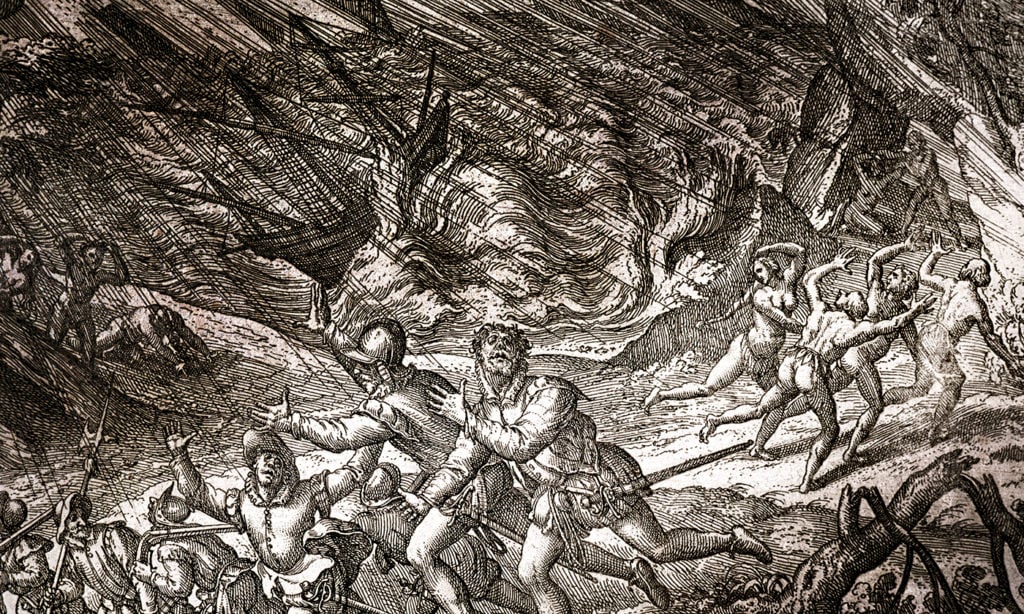The echoes of history resonate through time, often leaving indelible marks on societies, cultures, and populations. One of the most profound of these marks is the impact of colonization. This historical phenomenon, characterized by the domination and exploitation of one people by another, has significantly shaped the world as we know it today. But while some remnants of colonization are visible in the architecture, language, and governance systems left behind, its most devastating consequences are often hidden beneath the surface — in the stark population declines that affected indigenous peoples worldwide.
Understanding the true scale of this impact requires peeling back the layers of history to reveal the myriad ways colonization triggered demographic shifts. From the introduction of new diseases to the violent conflicts and forced assimilation policies, the ripple effects of these actions continue to influence global populations today. This blog post delves into these historical consequences, providing a comprehensive analysis of how colonization contributed to significant population declines and altered the demographic landscapes across continents.
Imagine, for a moment, the bustling cities and thriving communities that existed long before colonial ships appeared on the horizon. These societies were rich with culture, knowledge, and traditions passed down through generations. However, with the arrival of colonizers, these worlds were abruptly and often violently disrupted. The introduction of diseases such as smallpox and measles, to which indigenous populations had no immunity, wreaked havoc, decimating communities and leaving a trail of devastation in their wake. 🦠
But the impact of colonization on population decline goes beyond disease. Economic exploitation and resource extraction played a crucial role in destabilizing these societies. Traditional ways of life were upended as colonizers imposed new economic structures and labor systems, often forcibly recruiting indigenous peoples into exploitative labor conditions. This disruption led to the breakdown of social structures and further population declines as communities struggled to adapt to their rapidly changing environments.
Furthermore, the cultural erosion inflicted by colonization had profound demographic implications. Forced assimilation policies, including the removal of children from their families to be ‘educated’ in colonial ways, aimed to strip away indigenous identities and replace them with colonial ideals. This cultural genocide not only led to a loss of cultural heritage but also contributed to population decline by undermining the family units and community structures that are vital for population growth and stability.
As we explore these themes, it’s essential to recognize the resilience of indigenous populations in the face of such adversity. While colonization undoubtedly caused significant population declines, it also sparked resistance movements and efforts to preserve cultural identities. These stories of resilience are a testament to the enduring strength of indigenous communities and their capacity to adapt and survive against overwhelming odds. ✊
In this deep dive into the devastating impact of colonization on population decline, we will also examine the long-term consequences of these historical events. The legacy of colonization is still evident today in the form of social inequalities, economic disparities, and ongoing struggles for land rights and cultural recognition. By understanding the past, we can better address the challenges that indigenous populations face in the present and work towards a more equitable future.
This journey through history is not just an academic exercise; it is a call to acknowledge the pain and suffering inflicted upon countless communities and to recognize the resilience and strength that emerged from it. By shedding light on these historical consequences, we hope to foster a deeper understanding of the impact of colonization and inspire action to support indigenous communities as they continue to heal and rebuild. 🌍
Join us as we uncover the layers of this complex history, exploring the intersections of disease, economic exploitation, cultural erosion, and resilience. Through this exploration, we aim to provide a comprehensive understanding of how colonization contributed to population decline and the lessons we can learn to prevent history from repeating itself. With a focus on historical evidence, personal stories, and scholarly insights, this blog post invites you to embark on a journey of discovery, empathy, and understanding.

Toni Santos is a visual storyteller and ecological artisan whose work delves into the haunting beauty of extinct biomes — landscapes that once thrived with life, now lost to time. Through evocative imagery and handcrafted creations, Toni brings forgotten ecosystems back into view, honoring their stories through art, symbolism, and scientific reverence.
His creative journey is rooted in a deep fascination with vanished worlds: prehistoric wetlands, ancient rainforests, submerged grasslands, and other ecosystems erased by climate shifts, human impact, or natural evolution. Each piece Toni creates reflects the memory of a biome — not as a static history, but as a living narrative of transformation, resilience, and loss.
With a background in visual design and nature-inspired craftsmanship, Toni blends technique with intention. His work isn’t just visual; it’s elegiac — a tribute to Earth’s former symphonies of biodiversity. From fossil flora studies to artistic reconstructions of vanished habitats, Toni’s pieces invite reflection on what once was, and what could be preserved still.
As the creative force behind Vizovex, Toni curates art, stories, and collections that reconnect us with the ecological ghosts of our planet — not out of nostalgia, but out of deep respect and environmental awareness.
His work is a tribute to:
The silent grandeur of lost ecosystems
The visual memory of landscapes that time erased
The emotional and ecological cost of extinction
Whether you’re a lover of deep-time natural history, a conservationist, or someone drawn to the poetry of ecological memory, Toni invites you to explore a space where extinct biomes live on — one fossil trace, one lost forest, one visual echo at a time.





